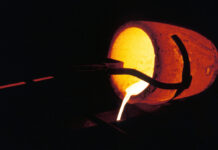
THE move to unbundle all of Gold Fields’ South African mines bar South Deep into Sibanye (which became Sibanye-Stillwater) “… was one of my best decisions from the point of view of Gold Fields and the assets themselves”, according to Gold Fields CEO, Nick Holland.
Holland was speaking on his last media conference call prior to retiring at the end of March when he will be replaced by former Anglo American Platinum CEO, Chris Griffith.
“We did two things by setting those assets free. We put them under a very focussed management and we created a platform for consolidation in the South African mining sector,” said Holland.
Holland highlighted the key strategic reason for the split was Gold Fields’ decision to focus on becoming a global gold producer.
He commented: “The (Sibanye) assets have done better because Gold Fields was looking to become a global company whereas putting these under focussed management which did not worry about anything else – at least for the first few years – ensured there was real focus to make sure they survived”.
“We were investing money to grow Gold Fields outside of South Africa so there was also a capital allocation factor to worry about. We wanted to move on and position Gold Fields for the future in terms of modernisation, mechanisation, and, ultimately, moving to automation,” said Holland.
Looking back on the track record of South Deep – which Gold Fields battled for years to make profitable – Holland said some steps such as the major restructuring implemented in 2018 could have been done earlier.
“But it’s a big step to put people on the street in this country when unemployment is so high. That is the last resort and we did try other means but, in the end, we had to do it to save the mine.”
Holland commented the question he had posed throughout the South Deep saga was this: “In a world where gold is hard to find, we are sitting on a big orebody so why not make it work for us? Why should we give it up? Rather fix the issues and make it work as opposed to giving it to somebody else.”











